Cancer and Your Pet
Cancer and Your Pet
A Guide to Alternative and Integrated Treatment
Marie Cargill
Rowman & Littlefield
Lanham Boulder New York Toronto Plymouth, UK
Published by Rowman & Littlefield
4501 Forbes Boulevard, Suite 200, Lanham, Maryland 20706
www.rowman.com
10 Thornbury Road, Plymouth PL6 7PP, United Kingdom
Copyright 2014 by Marie Cargill
All rights reserved . No part of this book may be reproduced in any form or by any electronic or mechanical means, including information storage and retrieval systems, without written permission from the publisher, except by a reviewer who may quote passages in a review.
British Library Cataloguing in Publication Information Available
Library of Congress Cataloging-in-Publication Data
Cargill, Marie.
Cancer and your pet : a guide to alternative and integrated treatment / Marie Cargill.
pages cm
Includes bibliographical references and index.
ISBN 978-1-4422-3029-3 (cloth : alk. paper) ISBN 978-1-4422-3030-9 (electronic : alk. paper) 1. Veterinary oncology. 2. PetsDiseases. 3. Cancer in animals. I. Title.
SF910.T8C37 2014
636.089'6994dc23 2013049488
 The paper used in this publication meets the minimum requirements of American National Standard for Information SciencesPermanence of Paper for Printed Library Materials, ANSI/NISO Z39.48-1992.
The paper used in this publication meets the minimum requirements of American National Standard for Information SciencesPermanence of Paper for Printed Library Materials, ANSI/NISO Z39.48-1992.
Printed in the United States of America
DEDICATED TO BOTH MY LOVES:
ANIMALS AND ALTERNATIVE MEDICINE
There is one thing stronger than all the armies of the world,
and that is an idea whose time has come.
Victor Hugo
Acknowledgments
M y sincere appreciation of all the help and encouragement from so many people. There is no way to thank the clients and patients, human and animal, whose support is on every page. I hope they realize they are part of the solution to the best medicine and cancer treatment in particular that they can provide for their pets. My profound gratitude pours out to those who have made the leap of faith to alternative medicine and allowed me to work with their loved pets.
Plus, there are some particular individuals who have made this book possible. Tim Thompson and his computer skills, Dr. Eugene Bernstein and his research help, Bill Graelish for hunting down the research of certain parts of this work, Rachel Cann for her criticism and Jennifer Sacks for her editing, Dr. Marge McMillan for her insights into difficult cases and filling in my blanks on veterinary care, and Sue Farlow, Donna Wood, and Nancy Rosenberg, colleagues in the field of pet care who shared experience and their unique skills.
And to a great agent, Grace Freedson, thanks for believing in the book.
Humble gratitude to Kwan Yin.
Above all, I stand in awe of the medicine I practice.
Introduction
O fficially, the six-year-old golden retriever was not a police officer, but to the veterinary staff who were always thrilled to see him, he was Officer Joey. Joey was a police dog specializing in the detection of narcotics. He was also a cancer survivor. Joeys story is a tribute not only to the integration of varied medical approaches, but also to a brave dog and his determined human family.
Since childhood, Adamthe human most attached to Joeyhad had two loves: police work and dogs. It seemed inevitable that he would find a way to put them together. When he grew up, Adam became a police officer. Choosing Joey as a puppy, he immediately started to train the dog for detective work. Joey embarked on his professional career at six months old, and, except for the months when his cancer was being diagnosed and treated, he worked continuously uncovering stashes of heroin, cocaine, and marijuana throughout the state of Massachusetts.
To become a police dog, Joey had to go through 10 weeks of drug academy training with Adam. Early on, Joey learned how to handle a retrievea rolled-up towel tossed into a field. He mastered the exercise, starting in a broad outer circle and gradually working inward until he located the retrieve.
The next step involved introducing a drug odor into the towel; the dog learned to associate the odor with his towel. (In police dog training, the animal is never exposed to actual drugs.) As the odor of one drug was mastered, another was added until Joey could recognize the scents of the major drugs he would eventually pursue. Fully trained, Joey, like all narcotic-detecting dogs, could search out hiding places in buildings, vehicles, and boatsanywhere a package could be hidden. When he smelled drugs, the dog would alert his human partner by scratching or biting at the hiding place.
After the initial training, Joey and Adam went through a certification process that qualified them to be put on the local drug task forces on-call list for search-and-raid missions. As a team, the two alone performed 35 school searches in a busy year.
One day Adam noticed a lump on Joeys left wrist area. Two days later, it had tripled in size. Adam took Joey to a veterinarian who misdiagnosed the problem, so when the leg swelled, felt hot to the touch, and couldnt bear weight, Adam made an appointment at a major veterinary teaching hospital. The diagnosis was nerve sheath tumor. A letter Joeys family sent out to 30 clinics and hospitals in the greater Boston area explains the outcome:
To Whom It May Concern,
We are writing you this letter in hope that you may be able to help us. In early March of this year, our three-year-old golden retriever, Joey, was diagnosed with a nerve sheath tumor on the top of his left front paw. He was operated on at a university hospital, shortly after to remove as much of the tumor as possible. Within a month, a lump had reappeared in the same spot, so we began radiation and chemotherapy treatments. Joey went through a series of 17 radiation treatments and also received four doses of a cancer drug. It has been approximately two months since Joeys last treatment, and he still has severe radiation burns. When we brought our concerns to the veterinarians at the university hospital, they had no idea what was causing such bad burns. We went for a second opinion at another animal hospital in Boston. They believed the margins on the radiation machine were too wide, causing permanent damage to his lymph nodes. Since our last visit to the veterinary hospital, we have seen doctors, surgeons, plastic surgeons, and radiologists. They all have varied answers. Short of amputation, they have no ideas what to do. A few suggested skin grafts but at the same time didnt believe they will attach because so much damage has been done. At this point we will try anything. Before we started treatment, Joey was a very active dog. He is also employed by the... police department as a narcotics dog. Even though Joey is a work dog, he is foremost a member of our family. We write this letter in hope that someone, somewhere has heard of this before and may be able to offer a suggestion. As I said before, we are willing to try anything.
Adam and Jenny
The letter arrived at the clinic I worked at as a consultant, and the chief veterinarian shared it with me. When Joey came for his first visit with us, nearly three months after completing surgery, radiation, and chemotherapy, he was a very sick dog. He had no appetite, had lost a significant amount of weight, and was experiencing continuous diarrhea. He couldnt put any weight on his bad leg. Joey wore a cone collar over his head to prevent him from getting at the wound, which was very tender and painful to the touch; it oozed and bled. At the hospital, Joey had been put on steroids but suffered a bad reaction to the drug and was then prescribed an antihistamine. The family was facing the possibility that Joey would lose his leg.
Next page
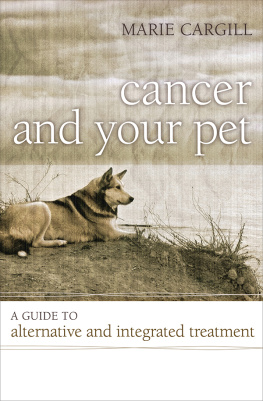
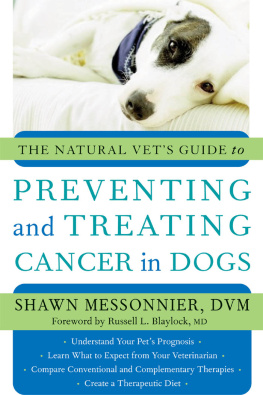
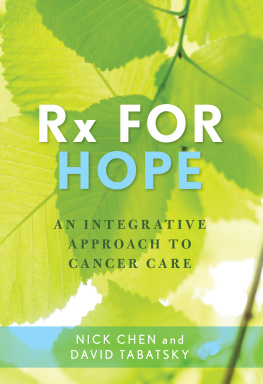
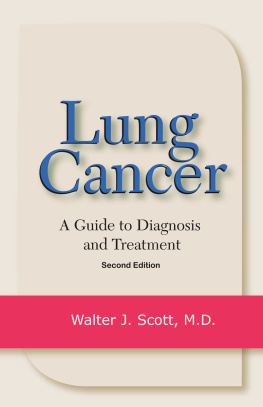
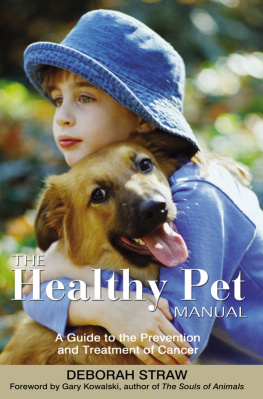


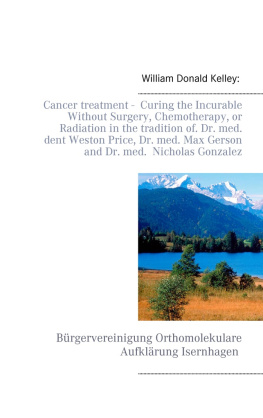

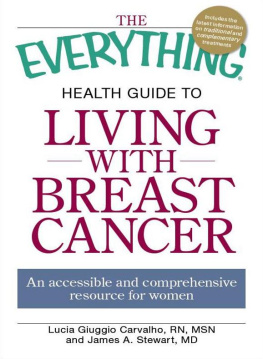

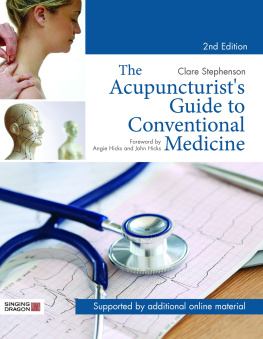
 The paper used in this publication meets the minimum requirements of American National Standard for Information SciencesPermanence of Paper for Printed Library Materials, ANSI/NISO Z39.48-1992.
The paper used in this publication meets the minimum requirements of American National Standard for Information SciencesPermanence of Paper for Printed Library Materials, ANSI/NISO Z39.48-1992.